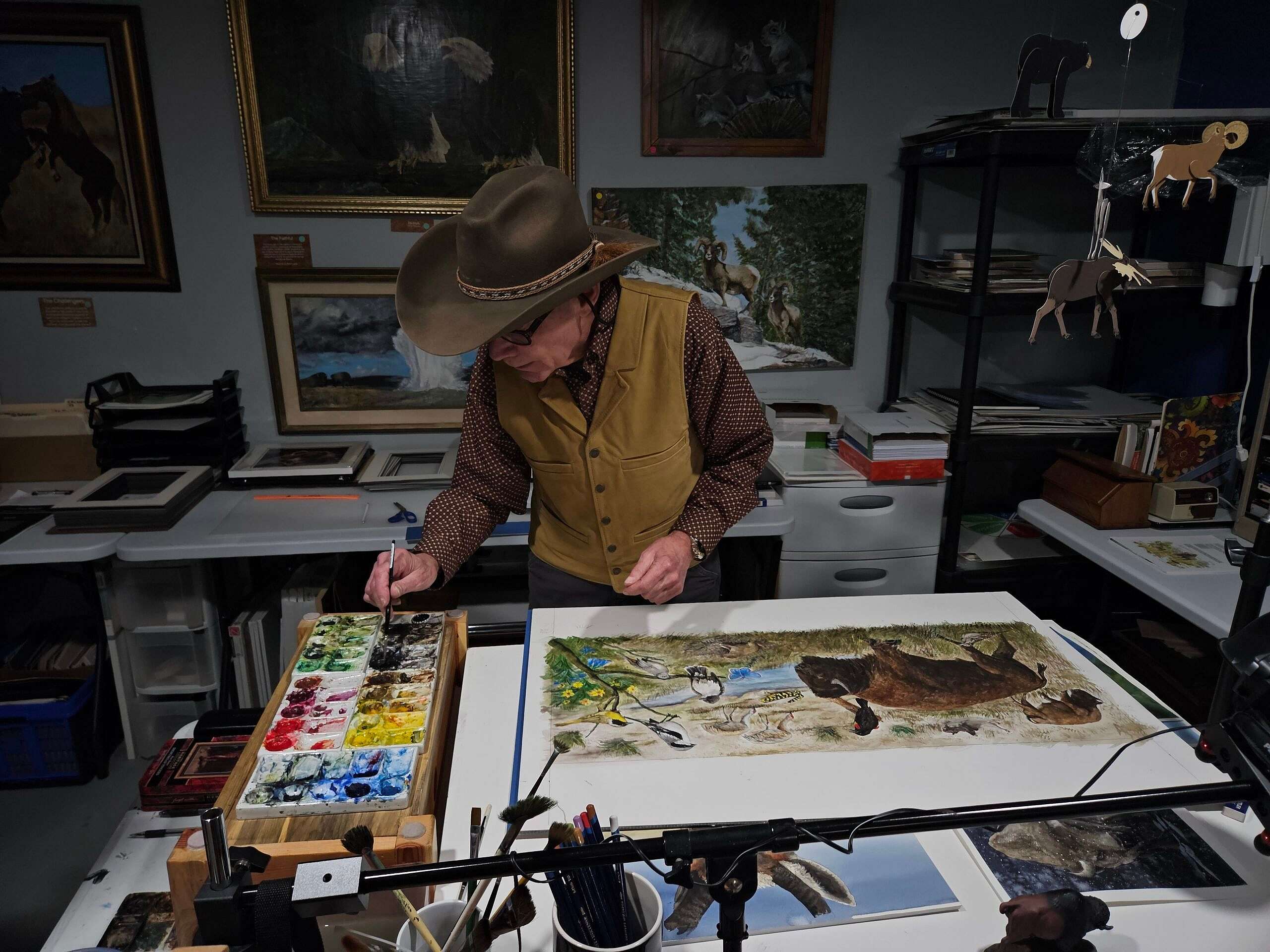The Bison Effect: How Bison Help Their Neighbors

Bison are both keystone species and ecosystem engineers – supporting other species as well as shaping their habitats. This drawing by Steve Leonardi showcases just a few of the lives they touch.
Bison Fur
Birds such as the Common Yellowthroat (Geothlypis trichas), Loggerhead Shrike (Lanius ludovicianus), Gray Catbirds (Dumetella carolinensis), Red-winged Blackbirds (Agelaius phoeniceus), Eastern Kingbird (Tyrannus tyrannus), and Lark Sparrow (Chondestes grammacus) use the woolly fur of bison to incubate their eggs. This is important in the temperamental springs of the Great Plains and Rocky Mountains. Eggs won’t hatch if they’re exposed to cold temperatures for extended periods of time. For birds that only lay one clutch per year, this means they must wait a whole year to produce more eggs. Bison fur insulates the eggs against cold temperatures, which can boost the reproductive efforts of songbird populations in the face of nationwide population declines (Rosenburg et al. 2019). As such, bison fur may be particularly important to western prairie species.
Grazing
Bison grazing maintains grasslands and open meadows. As they graze, they create a tapestry of plants at many different heights, benefiting many species rather than just a few. Prairie dogs (Cynomys sp.) take advantage of grazed areas, where it is easier to spot predators.
Spot the butterfly in the work; this Karner blue butterfly (Lycaeides melissa samuelis) was listed as a federally endangered species in 1992. The butterfly, found in the Great Lakes region, relies on lupine for food and egg laying. The lupine (Lupinus sp.) grows best in full sun. Without bison grazing to maintain open meadows, the lupine was pushed out by plants with a greater tolerance of shade. Bison likely affect many other insect species in the same way. Unfortunately, insects are understudied, with perhaps as much as 80% of insect species still unknown to science. This, combined with the sparsity of bison herds, means many relationships between bison and insect species are likely unknown.
In the illustration, you’ll spot Sandhill Cranes (Antigone canadensis) eating bugs from bison patties. Bison patties provide food for beetles and butterflies. The patties are also nutrient-rich deposits that insects, bacteria, and fungi break down into soil. Plants rely on these rich nutrients to grow healthy, which in turn provides food to bison, deer, pronghorn, rabbits, and many insect species.
Wallowing
Near the back of the illustration, you’ll see the dust cloud produced by a wallowing bison. Bison wallow to remove pests (like ticks, fleas, and flies) from their fur, shed their winter coat, and scent mark. While wallowing benefits bison, the depressions they leave behind provide important ecosystem services.
Notice the wildflowers in the artwork. A 2016 study found that yarrow (Achillea millefolium), alpine arnica (Arnica alpina), and tall bluebells (Mertensia paniculata) are all found in higher frequencies at bison wallows, even wallows that have been abandoned for many years. Wildflowers are important food sources for pollinators. In winter, some wildflower seeds are a source of food for songbirds.
Wallows retain spring rain longer into the hot summer months. These reservoirs are breeding grounds for amphibians, such as the tiger salamander (Ambystoma tigrinum). Without wallows, amphibian populations struggle to find suitable breeding locations and, as a consequence, populations decline.
What’s missing from this illustration?
Bison continue to impact lives long after their death. A dead bison may feed turkey vultures, golden eagles, ravens, crows, wolves, grizzly bears, mountain lions, dermestid beetles, flies, and more! Can you imagine what happened to scavenger populations when bison populations almost disappeared from the landscape?
Written By
Amy Phillips
Amy Phillips brings seven years of experience in the cultural heritage field to her position as Curatorial Assistant at the Center of the West's Draper Natural History Museum. She is the co-Principal Investigator on the “Bison of the Bighorn Basin” Project, which employs faunal analysis to learn about past bison ecology in the geographic Bighorn Basin using more than 100 bison crania sourced by community engagement. Amy also serves on the Society of American Archaeology Public Outreach Committee and as an appointed member of the Park County Historic Preservation Commission. She has research interests in the relationship between humans and their environments in the past and present, taphonomy, and bison ecology. Amy is currently pursuing her Master of Science in Cultural Resource Management, Archaeology from St. Cloud State University.
